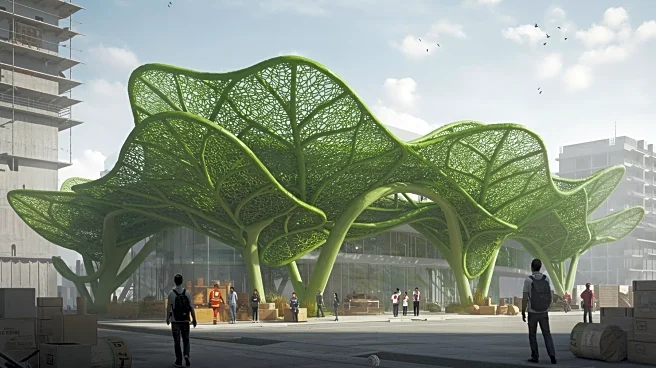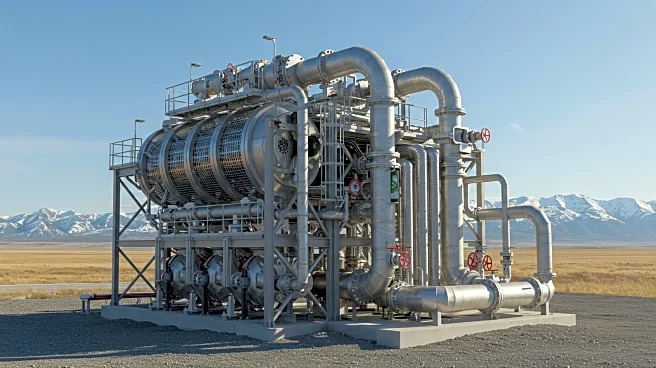What's Happening?
Researchers at ETH Zurich have developed a photosynthetic material that can be 3D-printed into architectural elements, potentially revolutionizing construction practices. This innovative material hosts cyanobacteria, which use sunlight to capture carbon dioxide, thereby reducing the climate footprint of buildings. The material functions by growing new biomass and causing minerals to form that trap carbon dioxide. The installation, showcased at the Canada Pavilion in the Venice Architecture Biennale, serves as both a scientific experiment and a public demonstration. The material's ability to improve air quality and reduce pollution from construction materials, such as concrete, which accounts for 8% of global heat-trapping pollution, is being explored.
Why It's Important?
The development of this photosynthetic building material is significant as it addresses the environmental impact of construction, a major contributor to global pollution. By integrating cyanobacteria into building materials, the construction industry could reduce its carbon emissions and improve air quality. This innovation aligns with global efforts to combat climate change and improve public health, as poor air quality affects millions of Americans. If successful, this technology could complement existing efforts to reduce pollution from cement manufacturing, offering a sustainable alternative that stores CO2 directly in buildings.
What's Next?
The next steps involve proving the stability, safety standards, and maintenance routines of the material at scale. Researchers will need to verify the carbon reduction capabilities outside controlled settings. The experiment's success could lead to broader adoption in the construction industry, potentially transforming building practices and contributing to global climate goals. Continued research and testing will determine the feasibility of widespread implementation.
Beyond the Headlines
This development highlights the intersection of biotechnology and architecture, offering a glimpse into future construction practices that prioritize sustainability. The ethical implications of using living organisms in building materials raise questions about maintenance and long-term environmental impact. As the technology advances, it may influence cultural perceptions of architecture and sustainability, encouraging more eco-friendly designs.













